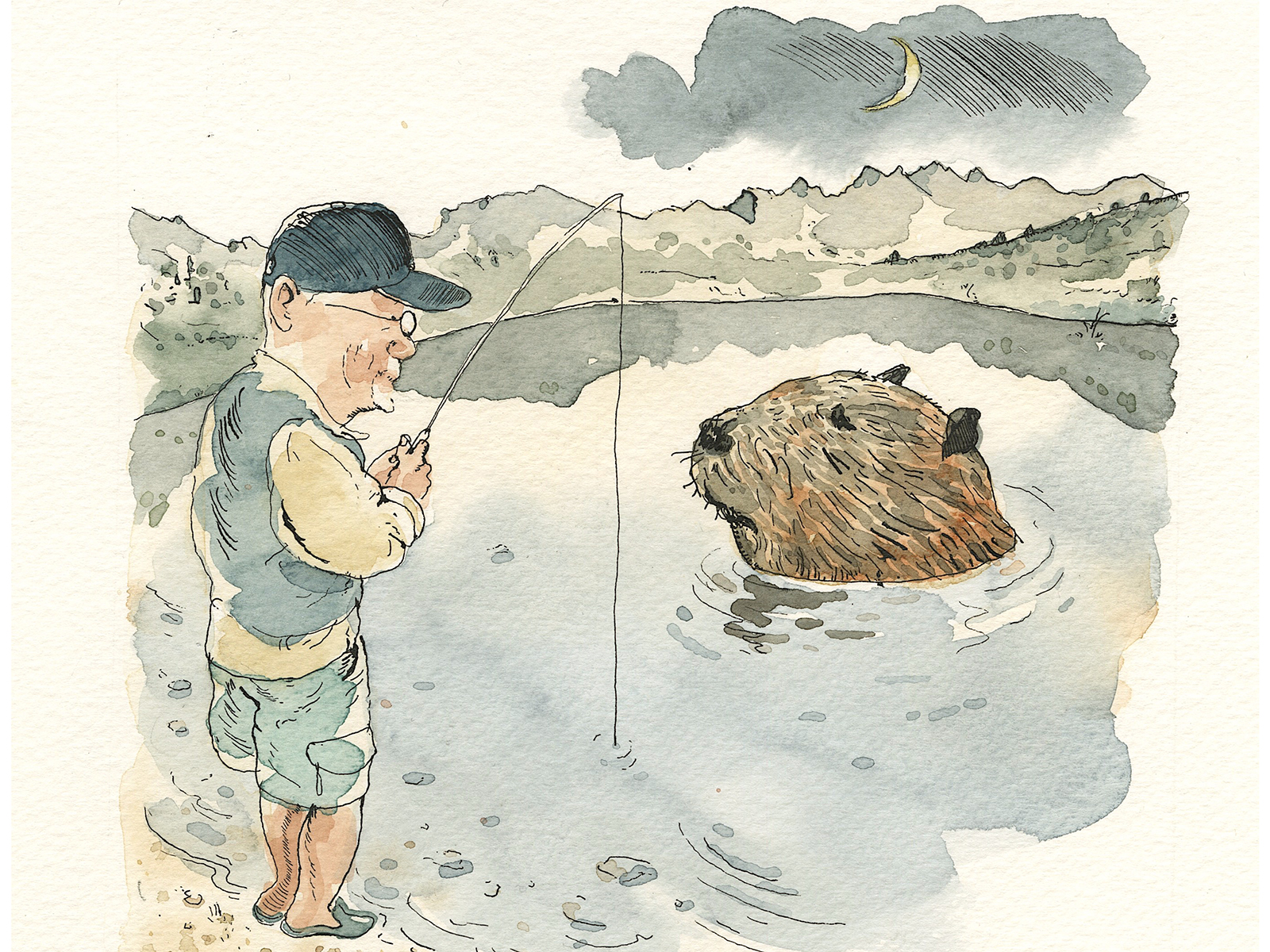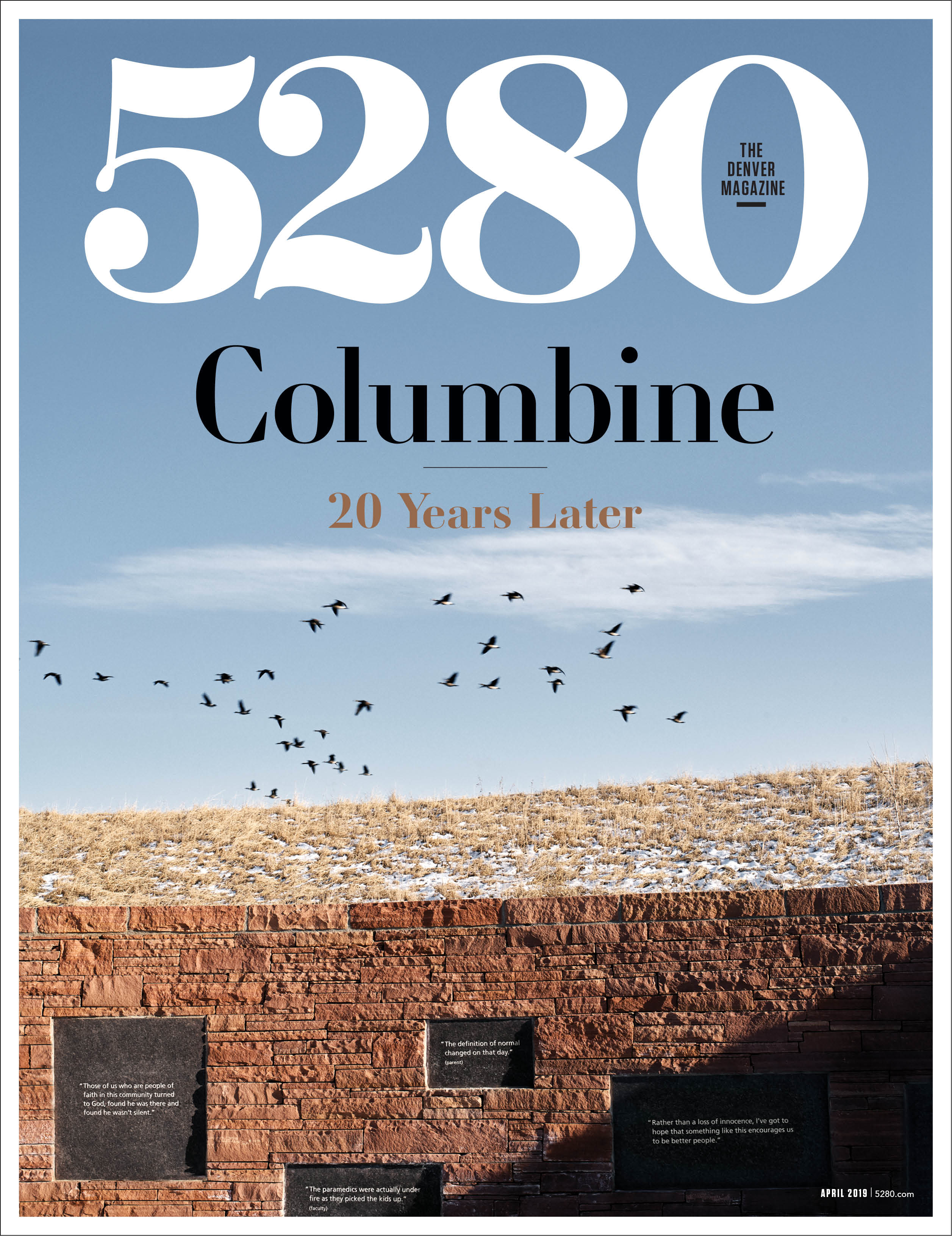The Local newsletter is your free, daily guide to life in Colorado. For locals, by locals.
Each morning at about 7:30, Pete Dynes, who manages the rural development near Granby where we live, climbs into his truck to do his rounds. His regular route takes him along the dirt path that encircles the pond outside our back door, and he bumps along in the white pickup with his two dogs, Henry and Bay, loping alongside.
A visiting friend recently watched their strange little parade with me over breakfast and asked: “What does he actually do out there?”
“Beaver check,” I said. “Every night, a beaver starts building a dam where the Colorado River flows past the pond’s headgate. And every morning, Pete goes out to clear it. It’s endless and epic.”
My friend watched Pete’s truck disappear around a bend. “What happens if he doesn’t?”
Scenarios unspooled in my mind. If the beaver dammed the river, water would begin to pool. The two nearby houses might flood, and so might our home, which is a few hundred yards downstream. In time, the 1,450-mile Colorado, the West’s seminal river, might find an entirely new course, bypassing the Grand Canyon and ending millennia of erosion. Lake Mead could run dry; the Las Vegas Strip could go dark; Los Angeles could devolve into a stark desert wasteland. I mentioned a few of these possibilities, noting that not all were necessarily bad.
My friend sipped his coffee and nodded. “Sounds like Pete’s a pretty important guy.”
Other than humankind, the beaver is one of the few animals capable of intentionally transforming its surroundings in profound and often disruptive ways. The only real difference is that humans, with their bigger brains and an excess of hubris, are capable of executing plans on a much grander scale. That’s how we get things like the Colorado-Big Thompson Project and Super Bowl halftime shows.
Beavers are no less ambitious, but they haven’t yet figured out how to use power equipment. Still, they’re the eager architects of the animal world, capable of remarkable feats of destruction and construction. They gnaw down trees of significant size and then convey them, branch by branch, across streams, rivers, and ditches to the spots of their choosing. In downstream riverbeds, usually working at night, they engineer mud foundations, install dams on top of them, and then build islands with one-room wood condos nearby. The living quarters, called lodges, are warm, dry, and accessible through protected underwater entrances.
I’m not capable of that kind of creation, even with a college degree.
At one point, hundreds of millions of beavers roamed North America, changing the flow of countless streams and rivers. Westbound settlers hunted and trapped them to near extinction for their valuable pelts, but now some humans are trying to bring them back. Why? Because a lot of good science supports the idea that beavers are admirable environmentalists. Their grooming work on the landscape benefits other species, including elk, moose, birds, fish, and insects. Humans profit, too. Beaver dams improve water quality by creating sinks that can remove up to 45 percent of harmful nitrogen from streams and creeks. The resulting ponds also create wetland areas for other species and can help with needed groundwater storage in dry climates. Beaver reintroduction projects already are underway in at least four states, including in sections of Rocky Mountain National Park here in Colorado.
Despite their obvious talents, beavers are considered “nuisance wildlife” by the state. And the laws regarding nuisance wildlife are clear: If critters are causing damage to crops, property, or livestock, humans can hunt, trap, or otherwise “take” those critters without a license. The Catch-22 for beavers: “Small game and furbearers captured in live traps cannot be moved from the capture site and must be killed or released on-site.” Relocation is possible, but it requires a hard-to-get state permit. Which, unfortunately, leaves Pete with just one option.
I was a newcomer to Colorado the first time I touched a beaver. Pete had invited me to take a look at a dead one in the barn. It was lying feet up, eyes closed, in the bed of Pete’s small four-wheel-drive ranch utility vehicle. I was struck by its bulk. The beaver almost filled the bed, nearly the size of Bay, Pete’s matronly chocolate lab. I remember the smell of damp fur. I saw no obvious signs of injury, but I knew Pete had shot it.
The animal looked familiar. I was fishing one evening from the edge of the pond near our house when it popped its head out of the water like the periscope of a chubby submarine. We stared at each other as it swam back and forth about 10 yards off the bank where I was standing. I felt like we bonded.
Problem was, Pete had seen it, too. Not right then, but on previous occasions. He’d also seen the big fella’s handiwork in the shredded aspen and other stumps that were becoming difficult to ignore along the pond’s edge. In time, the whole area might be defoliated. But Pete never had his rifle with him in those instances, so he’d been pulling branches up and out of the water each morning, waiting for an opportunity.
The homeowners in our development employ Pete to maintain just the right balance between the civilized and uncivilized. We like the ungroomed and natural feel of the one-time ranch, but we also like the trails to be cleared of deadfall trees and water to flow unimpeded. The ranchers downstream from us rely on an irrigation ditch that runs across our property, and whenever a beaver tries to dam the flow, the ranchers arrive within hours to clear it. For them it’s not an aesthetic debate. Their livelihood depends on free-flowing water.
I can’t speak for anyone else, but I was happy when another beaver showed up the following spring. If it gets overly ambitious, though, Pete knows what he has to do. Those are the days, he once told me, when he doesn’t much enjoy his job. Turns out Pete likes beavers, too.
I know I should be grateful for Pete’s facility with a rifle. But I still found myself rooting for this new beaver, wondering if maybe there was still a chance for a negotiated settlement in our ongoing turf war.
One day last spring, I ran into Pete at the barn. He told me he was brushing his teeth that morning and, from his bathroom window, noticed a “streamer” on the pond, ripples from something swimming across the surface. About 30 minutes later, during his morning rounds, both Henry and Bay—alerted by a booming tail splash just offshore—fixated on a spot. That time, Pete had his rifle in the truck. Eight shots later, he was pretty sure he’d got two of them, an adult and a kit.
“Now what?” I asked.
“We wait,” he said. “They dive when they’re hit, and sometimes the bodies don’t surface for days.”
For the next week, I scanned the pond for floaters. Nothing. I conferred with Pete, who also hadn’t spotted any sign of their demise. “Maybe they died in the river and were washed downstream,” he said, “or maybe they just moved on.”
I didn’t see the beaver again that spring or summer, but I did see telltale signs that it might be alive. A downed tree. The start of a dam in the irrigation ditch—which I cleared myself before Pete found it. Once I thought I saw the beaver disappear into the roots of a tree at the edge of the pond. It could have been a muskrat, but I nevertheless chose to keep what I’d seen a secret.
I know my neighbors might object to me rooting for the beaver, but in many ways I do, much the way I rooted for Chief Bromden in the final scene of One Flew Over the Cuckoo’s Nest. I think of him safely escaping the hostile place that had been his home. I think of him fleeing into the night, his legs scuttling into the dark forest until they disappear. I think of him out there still.









